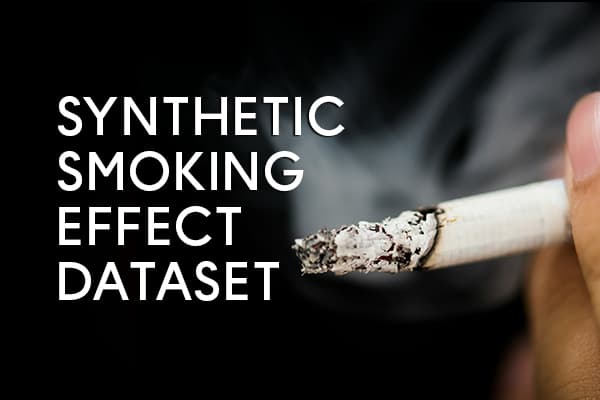Synthetic Smoking Effect Dataset
Patient Health Records & Digital Health
Tags and Keywords
Trusted By




"No reviews yet"
£179.99
About
The Synthetic Smoking Effect Dataset is designed for educational and research purposes to analyze the impact of smoking on various health indicators. It provides anonymized, synthetic data on individuals' demographics, physiological measurements, and medical history.
Dataset Features
- ID: Unique identifier for each individual.
- Gender: Gender of the individual (Male/Female).
- Age: Age of the individual.
- Height (cm): Height of the individual in centimeters.
- Weight (kg): Weight of the individual in kilograms.
- Waist (cm): Waist circumference in centimeters.
- Eyesight (Left/Right): Vision acuity for left and right eyes.
- Hearing (Left/Right): Hearing ability for left and right ears.
- Systolic: Systolic blood pressure measurement.
- Relaxation: Diastolic blood pressure measurement.
- Fasting Blood Sugar: Blood sugar levels after fasting.
- Cholesterol: Total cholesterol level.
- Triglyceride: Triglyceride level in the blood.
- HDL: High-density lipoprotein (good cholesterol) level.
- LDL: Low-density lipoprotein (bad cholesterol) level.
- Hemoglobin: Hemoglobin concentration in the blood.
- Urine Protein: Presence of protein in urine.
- Serum Creatinine: Level of creatinine in the blood.
- AST: Aspartate aminotransferase enzyme level.
- ALT: Alanine aminotransferase enzyme level.
- GTP: Gamma-glutamyl transferase enzyme level.
- Oral Health: Presence of oral health issues (Yes/No).
- Dental Caries: Presence of cavities (Yes/No).
- Tartar: Presence of tartar build-up (Yes/No).
- Smoking: Smoking status (Yes/No).
Distribution

Usage
This dataset can be used for the following applications:
- Smoking Impact Analysis: Assess how smoking affects health parameters such as blood pressure, cholesterol, and lung function.
- Medical Research: Explore correlations between smoking and chronic diseases.
- Preventative Healthcare: Identify risk factors associated with smoking-related conditions.
- Machine Learning Models: Develop predictive models for health risk assessment.
- Public Health Insights: Guide policies and initiatives to reduce smoking-related health risks.
Coverage
This synthetic dataset is fully anonymized and adheres to data privacy standards. It represents diverse demographics and health profiles to facilitate comprehensive analysis.
License
CC0 (Public Domain)
Who Can Use It
- Data Scientists and Machine Learning Practitioners: For predictive modeling of smoking-related health effects.
- Healthcare Researchers: To study smoking's impact on various health indicators.
- Public Health Professionals: For insights into smoking-related population health trends.
- Educators and Students: As a teaching resource for health analytics and data science projects.
Loading...
